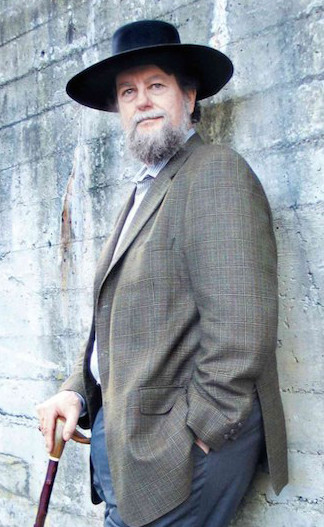In 2005, Lev Grossman of Time Magazine declared that George R. R. Martin was “the American Tolkien.” Since then, you’ll be able to find the phrase splashed on just about every one of Martin’s wonderful novels.
And for good reason, of course. That’s a really awesome blurb. I’d love it on my own novels. Or how about just “the American Pullman”? I would be totally cool with that, Mr. Grossman!
Unfortunately, I think that my series The Shards of Heaven—while it follows Philip Pullman’s superb His Dark Materials in ultimately positing a new origin story for the gods—would not be the right fit for the comparison. Pullman’s series is a parallel world fantasy fundamentally in dialogue with John Milton, William Blake, and C. S. Lewis; my series is a historical fantasy set during the time of Antony and Cleopatra that dialogues with history, legend, and myth. He and I are really doing different things. And the same kind of differentiation is true, I think, of Martin and Tolkien. Martin’s A Song of Ice and Fire might exist in the shadow of The Lord of the Rings—I’ve written elsewhere about its quasi-“medieval” setting—but they are tremendously different works in tone, scale, and intent. As terrific as his work is (and, seriously, you can put down the pitchforks if you’re a fan of Westeros), George R. R. Martin isn’t the American Tolkien.
Robert Jordan is.
In the most simple terms, that’s what I want to argue in this essay: James Oliver Rigney, Jr., writing as Robert Jordan, created a work of literature—and I certainly don’t use that term lightly—that is best understood through the lens of Tolkien’s own creative project. The Wheel of Time is the most prominent and successful American response to Tolkien’s masterwork.
So let’s begin with the deceptively simple matter of what it was that Tolkien was up to in his creation of Middle-earth. And for that we need to understand, at a root level, what Tolkien did for a living.
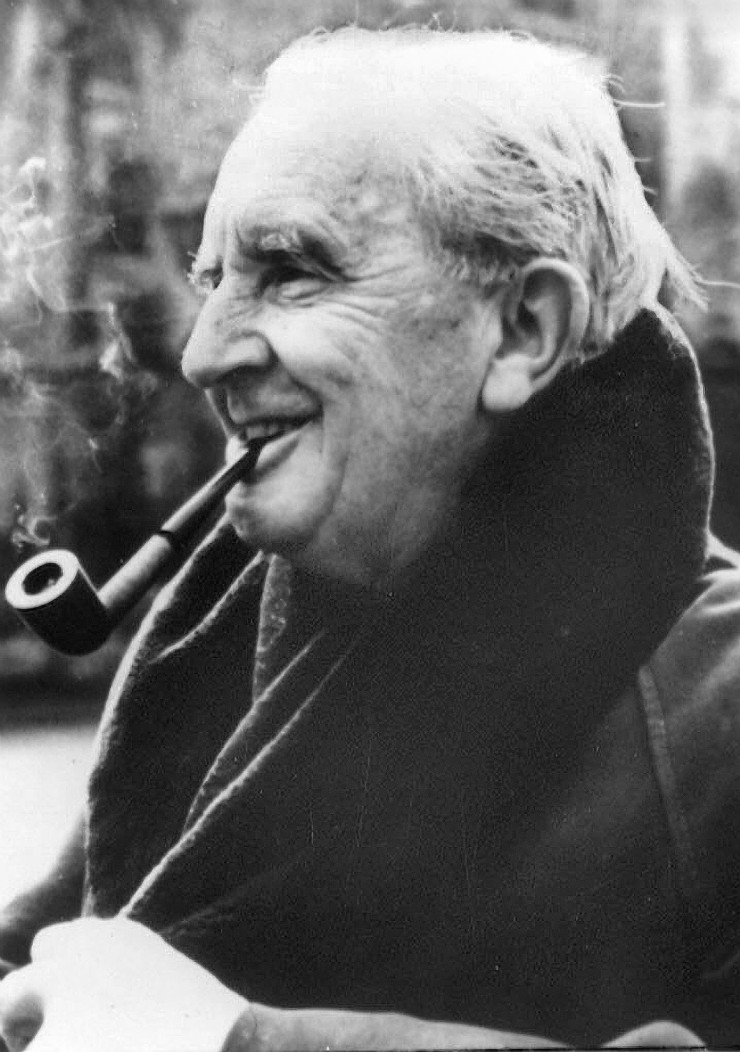
Tolkien was a philologist by both trade and mindset. Like me, he was a professional academic who taught medieval literature at a university and wrote in his spare time between grading student papers. And I mean this latter point quite literally: Tolkien’s first published book of Middle-earth, The Hobbit, was supposedly begun when he was grading exams in his office one hot summer day, exhausted and no doubt exasperated. He turned the page of one of the exams to find that the student had left the next page, as he put it, “blessedly blank.” On that blank page, Tolkien wrote, for reasons he could never explain, the following:
In a hole in the ground there lived a hobbit.
Tolkien later claimed that he stopped grading at that point, and he then spent quite a long time staring at the words he’d mindlessly written. And because he was a philologist, he stared in particular at that last word — hobbit — trying to figure out what it meant. He couldn’t recall having ever seen it before. (Or so he claimed; the origin of the word has been recently cast into doubt.) That search for meaning ultimately dovetailed with a history of elves and men that he’d been pondering in the trenches of the First World War, and from their creative combination Middle-earth was born. To understand Tolkien at all—and, as I’m going to argue, the same ought to be said of Jordan—you must understand that he was a philologist at heart, the kind of fellow who would, in the end, construct a world out of a word.
Philology literally means “love of learning,” which is something I’d like to think has been around as long as homo sapiens have had the ability to think. Yet when I say that Tolkien was a philologist I have something more specific in mind, something that could be said to begin in 1786 in Calcutta, then the capital of British India. Sir William Jones had founded the Asiatic Society two years earlier to promote the academic study of India and the East, and on this occasion he gave a lecture—without PowerPoint or Prezi, poor chap—to the Society about some correspondences he’d been noticing between the languages of Latin, Greek, Sanskrit, and Persian.
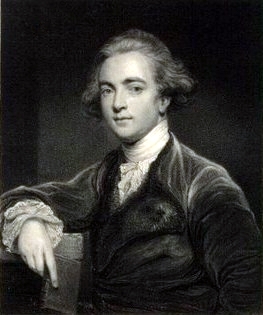
The languages were similar enough at times that he suggested that they must be “sprung from some common source which, perhaps, no longer exists.”
Numerous scholars poured their minds into the exploration of such linguistic connections, and by the middle of the nineteenth century they had determined many of the laws that govern language change—the reasons, for example, that we don’t pronounce English the same way we did in the year 1000.
As scholars figured out the laws that took us from Beowulf to Chaucer to what we speak today, they were able to run those laws “backwards” from the oldest records—stuff like Beowulf—working further and further back in time until what once had been different languages started to coalesce into one.
This idea went over like hotcakes at a maple syrup convention. Everyone wanted a piece. The correspondences Jones had seen in 1786 were, it turned out, right on target: behind Latin, Greek, Sanskrit, and Persian—among other languages—is a single language that no longer survives but almost undoubtedly existed. We call it Proto-Indo-European, and we mark its words with asterisks, because they no longer exist in their original form; they’re only known by the altered remnants they left behind. Here, for example, we can see the similarities between the word for man in several different languages, along with the theoretically constructed Proto-Indo-European originator behind them all (which is marked with an asterisk as it does not survive in any material form):
Old English: guma
Latin: humus
Greek: khamai
PIE: *dhghem
What’s interesting about Tolkien’s personal brand of philology, though, is that for him the history of words was a means to profound cultural insight.
As one example, Modern Hindustani dudh, which has the same root as we have in our Modern English word daughter, doesn’t mean “daughter,” but “milk.” So duhitar, the Hindustani cognate to English daughter, means not “daughter” but “little milker.” From this linguistic connection, we might presume that daughters, in that distant Indo-European culture that gave rise to both Hindustani and English, must have regularly done the milking of the livestock. They were the little milkers. For philologists, the modern remnants of dead languages, like overgrown ruins in an ancient landscape, provide a window into the past that would otherwise be closed to us forever. The words quite literally tell stories.
I’ve gone on about this at some length because, well, I think it’s really cool. But also because it’s exactly what Tolkien was doing in his fiction. Tolkien was always careful to term his mythology as one that is ultimately meant to be associated with our world, fantastic though it might seem at times: “This is a story of long ago,” he writes in the Foreword to The Hobbit; not, we should note, “a story of long ago in a galaxy far, far away” or the like. Thus Middle-earth’s legends are connected to our legends, its languages to our languages, and its people to our people—if all at a distance deep in the fictional mists before recorded history. Middle-earth, in other words, is the result of the application of philological principles (finding words behind words, stories behind stories) to mythology. Tolkien scholar Tom Shippey has elsewhere termed the resulting mythology-behind-mythologies an “asterisk-reality,” thus underscoring its philological basis since, as I noted earlier, non-extant words whose existences are rooted out by linguistic laws are typically preceded by asterisks to mark their “invention” as missing links in the evolutionary chain of language.
This is not to say that Tolkien thought that the Battle for Helm’s Deep truly occurred somewhere in, say, Eastern Europe, but that something like Helm’s Deep could have occurred there, and perhaps that something like it ought to have occurred there.
I’ve been talking a lot about Tolkien here, but in point of fact this philological creative process is precisely the mantle that I believe Jordan inherited from Tolkien, albeit on a different scale and by a different procedure. Whereas Tolkien built from the nitty gritty of words and languages both real and invented, Jordan, I think, built from the larger scope of our cultural inheritance. Where Tolkien is often said to have aimed to create a “mythology for England,” I think Jordan aimed for something even more daring and profound: a “mythology for mankind.”
But before we get too far into the literary details of this process, I need you to bear with me a bit longer to understand the deeply personal aspect of Tolkien’s fiction, because here, too, I think we will see commonalities with Jordan.
Tolkien’s Lord of the Rings, though published widely only in the 1950s, was a work rooted in his experiences of the First World War. Tolkien was 23 when he left Oxford and his new wife, Edith, on the 22nd of March 1916 to go to France to serve as a signal officer with the Lancashire Fusiliers. His destination: The Battle of the Somme. He lost all but one of his friends at the “meatgrinder,” as he termed it, and he might himself have died in those killing fields, those barren and poisoned no-man lands, if he’d not developed trench fever and been shipped back to England to recuperate.
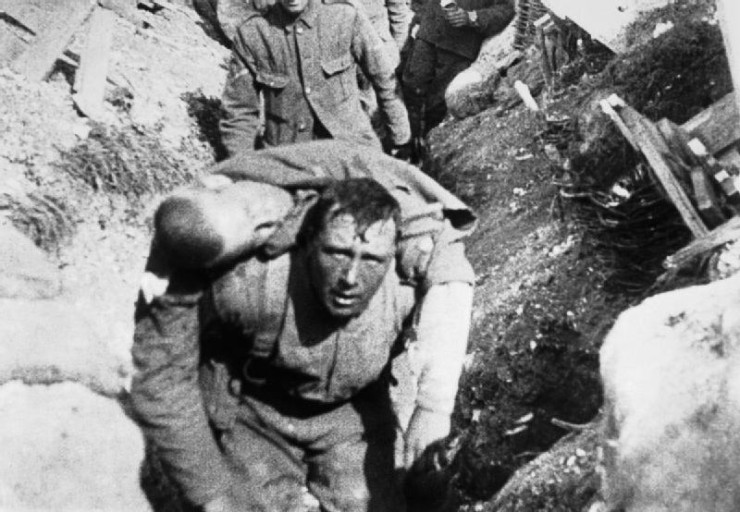
Though he’d toyed with invented languages and stories before the war, it was only in the wake of that horror that he began to construct the mythology of Middle-earth, and indeed we can see the marks of the Somme and its aftermath across his work. As but one more example, I’ve written elsewhere about how Frodo, I believe, is quite literally suffering from Post-traumatic Stress Disorder, more commonly termed “shellshock,” a condition first diagnosed among the hollowed faces of men at the Battle of the Somme. Indeed, I suspect writing Frodo was a way for Tolkien to cope with his own psychological difficulties as a result of what he had seen and done in the war. Even so, Frodo is not simply a personal foil for his creator; he also has mythological ties to Enoch and Elijah, Norse religion, and the Christian Everyman.
The major result of these many creative strands, The Lord of the Rings, was, as we all know, a really big hit, so it’s no surprise that a great many writers had to react to his work in one way or another, like Roger Zelazny’s Nine Princes in Amber, which debuted in the early 1970s.
1977 saw the start of two significant fantasy series that responded even more strongly to Tolkien: Terry Brooks’ The Sword of Shannara, which sought to emulate The Lord of the Rings almost point-by-point, and Stephen R. Donaldson’s Lord Foul’s Bane, which seemed at times determined to undercut it. But while I myself have enjoyed these books in their time, their foundations do not run as deep as Tolkien’s work.
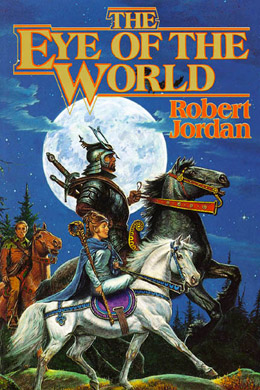 No, it isn’t until we get to the release, in 1990, of The Eye of the World, that I feel we can really begin to see someone taking up Tolkien’s flag with authority. The Wheel of Time series, which James Rigney, writing as Robert Jordan, began in this book, is a true successor, a true heir, to the kind of mythically philological trail of creation that Tolkien had blazed some fifty years earlier. Like Tolkien’s Middle-earth, the world of the Wheel is a myth behind myths. The wondrous Age of Legends, the “far past” of Jordan’s plot-lines in The Wheel of Time, is our mythically Atlantean past just as surely as is Tolkien’s story of the fall of Númenor from the Silmarillion. Again and again in Jordan’s work we see this same kind of mythological revision that is the hallmark of Tolkien’s work. Just to give you a feel for it:
No, it isn’t until we get to the release, in 1990, of The Eye of the World, that I feel we can really begin to see someone taking up Tolkien’s flag with authority. The Wheel of Time series, which James Rigney, writing as Robert Jordan, began in this book, is a true successor, a true heir, to the kind of mythically philological trail of creation that Tolkien had blazed some fifty years earlier. Like Tolkien’s Middle-earth, the world of the Wheel is a myth behind myths. The wondrous Age of Legends, the “far past” of Jordan’s plot-lines in The Wheel of Time, is our mythically Atlantean past just as surely as is Tolkien’s story of the fall of Númenor from the Silmarillion. Again and again in Jordan’s work we see this same kind of mythological revision that is the hallmark of Tolkien’s work. Just to give you a feel for it:
Jordan’s Artur Pendraeg is like our King Arthur Pendragon; the sa’angreal have clear roots in the stories of the Holy Grail; Shai’tan bears not just an orthological resemblance to Satan; Sammael is no doubt based on the Talmudic angel of death; the final battle of Tarmon Gai’don owes not just a little to biblical Armageddon; Lews Therin is similar in several respects to the Vulgate’s “Light-bearer,” Lucifer; and the Battle of Malden clearly owes most of its letters to the historical Battle of Maldon. The list could go on and on.
And not just in this mythological foundation is Jordan akin to Tolkien. From 1968 to 1970 James Rigney served his country for two tours in Vietnam, in the midst of heavy conflict as an Army helicopter gunner. Decorated heavily for his bravery—he earned a Distinguished Flying Cross with bronze oak leaf cluster, the Bronze Star with “V” and bronze oak leaf cluster, and two Vietnamese Gallantry Crosses with palm—Rigney was a man who, like Tolkien, had experienced the horror of modern warfare first-hand and was undoubtedly shaped by it. In the fullness of time, when a complete biography of Rigney’s is finally available, I feel certain that critics will see Vietnam in his work just as surely as we find the First World War in Tolkien’s.

For all these similarities, however, Jordan is not simply a Tolkien imitator. I have called him “An American Tolkien,” and that adjective signifies more than just nationality in this case. It points to a significant difference in his creative approach. America is, famously, a melting pot of culture, and I think Jordan subsumed—consciously or not—this same quality in the Wheel of Time. Tolkien wanted to construct a myth for England and so confined himself often to a Western cultural heritage, but Jordan, if I’m right, aimed at much bigger things. Everything was fair game for his creation, from Eastern myths to Native American cosmology. There are connections seemingly everywhere.
I say “everything was fair game,” and I want to be clear on this point. Jordan’s grand project involved not just story and myth, but even material culture.
As my students will attest, I rather enjoy a little show-and-tell. I own a handful of medieval weapon replicas, and I take much pleasure in bringing them in to class now and then to help them visualize the history and literature we happen to be studying.
Alas, the internet doesn’t yet support touch and feel displays—much less Smell-O-Vision—so we’re going to have to rely on pictures.

Pictured here is a katana, and an extraordinarily beautiful one at that. The primary weapon for the medieval samurai, the katana is a rightfully famed symbol of both Asian craftsmanship and the codes of honor by which the samurai lived. This particular example of a katana, however, is quite special to me because it comes from Jim Rigney’s personal armory. He was an avid collector of material culture, and weaponry appears to have been high and often on his wishlists. I cannot say that I drooled the first time I saw his collection—I try to be too cool under fire for that—but I was truly astonished at what he literally had at hand while he was writing his books. And it shows.

Look, for instance, at the “heron-marked” blade from Jordan’s books. A weapon associated with a true artist’s mastery of the bladed fight, the heron-marked sword bears not just a little resemblance to a katana. Easy to note is the slightly backswept, single-edged blade, which adds velocity to what is primarily a slashing weapon.
Both weapons are light enough to be handled with one hand, but they have hilts long enough for two, much like a medieval European bastard sword, an example of which I also happen to have here.

This is a hand-and-a-half sword that’s a replica of the fourteenth-century blade of England’s Black Prince. You can see how differently this weapon is designed from its contemporary Japanese counterpart. Where the katana whispers grace and flow, the bastard sword cries havoc and crushing blows.
Look back again, then, at Jordan’s creation: the heron-mark blade. An Eastern edge, but a Western sword’s weight. An Eastern point, but a Western guard. And a hilt that seems to be both at once.
In other words, Jordan has applied philological principles to material culture, something Tolkien never dared in quite the same way. He’s created a sword that unites the finest of both East and West. Physical artifacts like his katana were a driving force to his vision no less than the myths that they represent and recreate. Even setting this aside, though, we can be certain that objects like this spurred Jordan’s creative energy. There’s no doubt that he physically held such weapons in his hands now and again in order to make his vivid writing more real—I can attest that I certainly do the same when I’m writing my own stories—but we also cannot set aside the fact that he always held them in his mind, too, using such material evidence to widen the scope of the Wheel of Time as far and as deep into human culture as he could manage.
But even this isn’t the full story of Jordan’s methods. You might well note that in speaking of his use of myths behind myths I gave myself a lot of wiggle room. Because these aren’t exact equivalences. The Battle of Malden, for instance, is spelled rather like Maldon, but its ground and tactics are far closer to the Battle of Crécy in 1346. And to say that Lews Therin “equals” Lucifer in all his manifestations is to tread on very shaky ground.
Tolkien once railed against the idea that The Lord of the Rings was an allegory, because, in his opinion, proper allegory implies that a reader can swap elements from one story out for another in a one-to-one relationship. As he wrote: “I cordially dislike allegory in all its manifestations, and always have done so since I grew old and wary enough to detect its presence.” It was his distrust of allegory that stands most pointedly between his work and that of his friend C.S. Lewis, who embraced allegory wholeheartedly.
Though I can’t say I know for certain, I think Jordan’s opinion on allegories was far closer that of Tolkien than that of Lewis. In The Wheel of Time, pure allegorical equivalence is a rare thing, indeed. His character Mat, for instance, appears to be an amalgamation of the Norse gods Odin, Loki, and Heimdall, along with Native American Coyote, Egyptian Anubis, and Celtic Math (who I suspect to be the origin of his name), as well as some real world folks, such as the Swampfox, Francis Marion. There are pieces of these men and gods scattered here and there throughout Mat, but we cannot necessarily jump to conclusions because of them.
Yes, Mat was hung upon a tree to gain knowledge, just as Odin was. Yes, he carries a spear and wears a wide-brimmed hat, just as Odin does. Yes, both men are associated with ash, and with “Thought,” and “Memory”—the names of Odin’s ravens. And Matrim certainly has a god’s own remarkable luck. Yes, he loses one of his eyes just as Odin does. But while these mythological connections can be fascinating, they are not fully predictive. And they shouldn’t be. Odin dies at Ragnarok, for example, killed by the great wolf-beast Fenrir. Yet (spoiler alert!) Mat was hardly pitching up the daisies after Tarmon Gai’don. In fact, he survives in part due to the sounding of the Horn of Valere by a man named Olver, who in so doing becomes a kind of manifestation of Olivier from The Song of Roland—a “perfected” Olivier, who doesn’t let Roland’s last stand kill them all.
And what are we to do with Perrin, that amalgamation of the Slavic deity Perun and Norse Thor? Thor, according to the Eddic materials, dies in fight against the world serpent, Jormangundr, at Ragnarok: after striking his last blow, Thor famously staggers nine steps away from the serpent’s poisonous fangs before falling to his knees. For good reason, then, many of us were wondering if Perrin would make a fatal strike against the Aes Sedai or the White Tower itself. After all, within the world of the Wheel, the Norse world serpent eating its own tail—known from other mythologies as Ouroboros—is the symbol of the Aes Sedai. But we know that Perrin didn’t make such a strike, at least not directly. Again, these connections are fast and permanent. The Wheel of Time is widely and often specifically applicable, but it is not purely allegorical.
And as one more example, the Forsaken named Semirhage is at once the historical man Josef Mengele, the Hindu goddess Kali, the Egyptian goddess Sekhmet, and Enoch’s Shemhaza, among others. Peculiarly, in taking Rand’s hand she also took on the role of the Fenris wolf from Norse mythology—the same wolf that kills Odin at Ragnarok and thus ought to be around to kill Mat in the Last Battle. This was difficult for her to do, of course, given the fact that she’d been subjected to balefire.
Regardless, the point here is to say that Jordan appears to have viewed the whole history of humanity as grist for his creative mill, blending influences from Rome, Greece, India, Egypt, China, America, long ago, and yesterday wherever they fit.
While these might appear at first glance to be random or even sloppy associations, the interference of legend and history, history and legend, seems to be a grounding principle of Jordan’s vision. Time is cyclical—a wheel—and, in its repetitious spin, history repeats itself again and again.
In this understanding of the nature of time, too, we see separation between this American Tolkien and his British forebear. Tolkien, a devout Catholic, followed the example of St. Augustine in viewing the world as subject to a dynamic, uni-directional scheme of time. In chronological philosophy, this is called the “A-theory” of time, where time passes like an arrow, advancing undeviatingly from some beginning to some ending point. In A-theory, only the present time is truly real, as the past is finished and the future is indeterminate and unfixed—except, perhaps, from the point of view of God.
A-theory is the most familiar philosophy of time in human experience, reflected even at such a base level as our language, with its system of tenses past, present, and future. Yet I don’t think that this is the philosophy that governs Jordan’s world. Quite to the contrary, Rigney, a self-described “high-church Episcopalian,” is right in line with current theories of quantum Physics.
We call this the “B-theory” of time, where past, present, and future are all equally real. According to B-theorists, the future is just as fixed and determined as the past, we just know less about it. Brilliantly, Rigney has welded this concept with the Buddhist Wheel of Time, the Kalachakra.
As an aside, Augustine’s concerns about time—those reflected by Tolkien but I think rejected in Jordan’s work—are the subject of a 1955 essay, “Time and Contingency in St. Augustine,” which was published in the Review of Metaphysics by one Robert Jordan, then a professor at the University of the South. A peculiar coincidence—if coincidence it is—that there should be a connection between this otherwise obscure academic and this particular pen-name of Rigney’s, which he himself said was not from Hemingway’s For Whom the Bell Tolls.
At any rate, B-theory generally regards the distinction between past, present, and future to be a matter of semantics, with at least one interpretative strand of it focusing on time as a cyclical construction—a wheel of time, in other words. The future is past, the past is future, now is then and then is now. If you stand on a wheel, after all, it doesn’t matter which way you walk, you’ll get back to the same place.
This basic temporal fact, too often missed by readers, sheds light on a number of—shall we say—anomalies in this fantasy. In chapter 4 of The Eye of the World, for instance, we meet Thom Merrilin, the “gleeman” full of stories and mysteries, and oftentimes both at once—who is himself an homage to Merlin the magician.
“Tell us about Lenn,” one of the characters asks him. “How he flew to the moon in the belly of an eagle made of fire. Tell about his daughter Salya walking among the stars.”
“Old stories, those,” Thom Merrilin said, and abruptly he was juggling three colored balls with each hand. “Stories from the Age before the Age of Legends, some say. Perhaps even older. … Tales of Mosk the Giant, with his Lance of Fire that could reach around the world, and his wars with Alsbet, the Queen of All. Tales of Materese the Healer, Mother of the Wondrous Ind.”
If you don’t know, those are references to John Glenn, the Apollo Program, Sally Ride, the ICBM threat from Moscow, Queen Elizabeth, and Mother Teresa of Calcutta.
And if that doesn’t make the point, see this description from The Shadow Rising of some of the things a character finds in the Tanchico Museum of the Panarch’s Palace:
On one side of the room was the skeleton of something that looked like a bear, if a bear had two front teeth as long as her forearm, and opposite it on the other side were the bones of some slender, four-tooted beast with a neck so long the skull was half as high as the ceiling. … A silvery thing in another cabinet, like a three-pointed star inside a circle, was made of no substance she knew; it was softer than metal, scratched and gouged, yet even older than any of the ancient bones. From ten paces she could sense pride and vanity.
That is to say, the skull of a saber-toothed tiger, the skeleton of a giraffe, and a used hood ornament from a Mercedes-Benz.
This last one, by the way, was my favorite example of a seeming anomaly in Jordan’s work—until the first time I spent a few minutes in Jim’s library and office. Standing there in awe, feeling that magical sensation of wonder and familiarity, I turned to see, set high upon one of Jim’s shelves, a saber-toothed tiger skull and realized, with a sudden lurch of bright recognition, that I was myself standing in the Tanchico Museum.
So what does all this mean? How on Earth is this supposed to make any sense?
Well, to begin with, we must admit that, like Tolkien’s Middle-earth, Jordan’s world is Earth.
Our Earth. But unlike Tolkien’s A-theory sub-creation which was meant to be our past, Jordan’s B-theory sub-creation is both our past and our future. The cyclical nature of Jordan’s time means the Age of Legends is Atlantean myth, Golden Age history, and Science Fictional vision. His heron-marked blade is both the asterisk-sword behind Japanese katana and Western bastard swords and the idealized sword-to-come that has been grown from the foundation of those two legendary weapons.
It turns out, then, that—for once—the fateful decision of bookstores and publishers to collapse Fantasy and Science Fiction to the same rows of shelves is perfectly fitting.
When I earlier told you about that scene of the gleeman Thom Merrilin introducing himself as a storyteller, a scene that occurs very early in the first book of Jordan’s long series, what I didn’t tell is the rest of what he said.
“I have all stories, mind you now, of Ages that were and will be,” Thom says. “Ages when men ruled the heavens and the stars, and Ages when man roamed as brother to the animals. Ages of wonder, and Ages of horror. Ages ended by fire raining from the skies, and Ages doomed by snow and ice covering land and sea. I have all stories, and I will tell all stories.”
I hope we can see now how Thom might well be said to be speaking not just for himself, but for the greater work of literature of which he is a part.
James Rigney’s passing affected his millions of readers very deeply, and much has been made of how he left the final book of the Wheel of Time unfinished. We have seen, however, how hard that Brandon Sanderson worked—with the extraordinary, indefatigable help of Jim’s family and friends—to write those final pages: he understands the fan’s love for these works. But it is important to note that, even as Brandon’s last pages are turned in and the final book has been closed at last, the story will live on. The Wheel of Time, Jordan’s lasting legacy, will never be complete. It cannot be. After all, our futures, and indeed one might say the fullness of our pasts, remains for us forever incomplete. In memory, as in hope and dream, there’s always another chapter to be written.
James Rigney was not the first heir to the Tolkien legacy—and by no means will he be the last to follow him—but he might just be the most complete interpreter of that legacy. Rooted in mythology and history, founded in philosophy and spirituality, forged of war and the American experience, his Wheel of Time has easily earned its place alongside the British master fantasist. Even more, given the academic status Tolkien’s work has managed to achieve, the work of Robert Jordan has earned its place on any list of turn-of-the-millennium literature, whether the majority of critics like it or not.
And thus, in the end, we come full circle, which is, I think, exactly how Jim would have liked it.
Michael Livingston is a Professor of Medieval Literature at The Citadel who has written extensively both on medieval history and on modern medievalism. The Gates of Hell, the second volume in The Shards of Heaven, his historical fantasy series set in Ancient Rome, comes out this fall from Tor Books.










